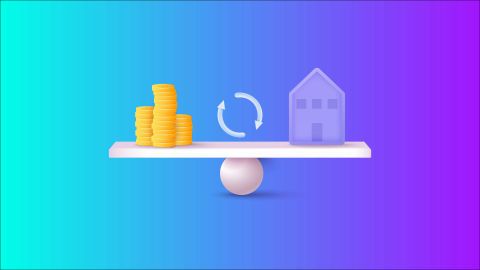Understanding the intricacies of income tax is crucial for every salaried individual in India. The income tax on salary is calculated based on various factors and components. Read on to understand the process of calculating income tax on salary, the components to consider, and ways to save on taxes.
How to calculate income tax on salary
Income tax on salary is the tax imposed by the government on the income earned by an individual through employment. The calculation of income tax on salary involves determining the taxable income and applying the applicable tax slabs. The process can be summarised in a few steps:
- Determine gross salary: Start by calculating the gross salary, which includes basic pay, house rent allowance (HRA), special allowances, and other benefits.
- Deduct exemptions: Certain components of salary are exempted from income tax, such as HRA, transport allowance, and others. Subtract these exemptions from the gross salary to arrive at the taxable income.
- Calculate taxable income: After deducting exemptions, calculate the taxable income. This is the amount on which income tax will be levied.
- Apply tax slabs: India follows a progressive tax system with different slabs and rates. Apply the applicable tax slab to calculate the income tax liability.
Examples: Let us consider an example to illustrate the income tax calculation on salary. Suppose Mr. X has a gross salary of Rs. 8,00,000 per annum. After exemptions, his taxable income is Rs. 7,00,000. Applying the tax slab, the income tax would be calculated accordingly.
How to calculate income tax on salary with income tax calculator?
- Gather your salary details: Collect information about your gross salary, including basic pay, bonuses, and other allowances.
- Determine your deductions: Identify all applicable deductions, such as those under Section 80C (e.g., investments in PPF, ELSS), Section 80D (health insurance), and any other exemptions.
- Input your data: Use an income tax calculator to enter your salary details and deductions. These calculators are designed to simplify the process and provide an accurate tax liability.
- Review your taxable income: The calculator will compute your taxable income by subtracting deductions from your gross income.
- Calculate tax liability: Based on the taxable income, the calculator will apply the relevant tax slabs and rates to determine your income tax liability.
- Check for additional taxes: Ensure that the calculator includes any applicable additional taxes, such as cess and surcharge.
- Verify and save: Review the final tax amount calculated. Save or print the results for your records and further use.
Using an income tax calculator can greatly streamline this process, ensuring accuracy and efficiency in determining your tax obligations.
Components of salary to take care of while calculating the income tax
When calculating income tax on salary in India, it is essential to consider various components of your salary, as they have different tax implications. Here are some key components to take into account:
- Basic salary: The basic salary is the fixed part of your salary and is fully taxable. It forms the basis for calculating various allowances and deductions.
- House Rent Allowance (HRA): HRA is an allowance provided by employers to employees to meet rental expenses. A portion of the HRA is exempt from income tax, subject to certain conditions.
- Special allowances: Special allowances cover various allowances provided by the employer, such as travel allowance, medical allowance, and others. Some allowances may be fully taxable, while others could be partially or fully exempt.
- Bonus and commissions: Bonuses and commissions received during the year are considered part of your income and are taxable.
- Perquisites: Perquisites include non-monetary benefits provided by the employer, such as a company car, accommodation, or club memberships. The value of these perquisites is added to your income and taxed accordingly.
- Contributions to Provident Fund (PF): Both employee and employer contributions to the provident fund are deducted from your salary, and the employee's contribution is eligible for deduction under Section 80C.
- Gratuity: Gratuity is a lump-sum amount paid by the employer to the employee upon retirement or resignation. It is tax-exempt up to a certain limit based on the length of service.
- Leave Travel Allowance (LTA): LTA is provided to employees for travel expenses during vacations. It is exempt from tax, but certain conditions must be met.
- Pension: If you receive a pension as part of your salary, it is taxable in the year of receipt.
- Other benefits: Other benefits such as food coupons, gifts, or stock options provided by the employer may have tax implications.
Understanding the tax treatment of each component is crucial for accurate income tax calculation. Additionally, exemptions and deductions available under various sections of the Income Tax Act, such as 80C, 80D, and 10(14), should be considered while computing the taxable income. Consulting with a tax professional or using online tax calculators can help ensure accurate calculations and efficient tax planning.
How to save income tax for a salaried individual
Salaried individuals can explore various avenues to save on income tax. Some common methods include investing in tax-saving instruments like Public Provident Fund (PPF), Equity-Linked Savings Scheme (ELSS), National Pension System (NPS), and availing deductions under sections like 80C, 80D, and 24(b).




